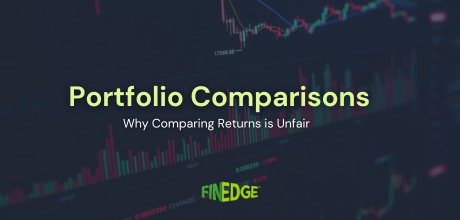Planning your Short-Term Investments using Mutual Funds

Short-Term Mutual Fund Strategies: Mutual funds aren’t just for long-term wealth creation; they can be used effectively for short-term investments based on tax bracket and time horizon. (Investment Flexibility) Debt vs. Arbitrage Funds: Short-term debt funds suit most investors, but if your horizon exceeds one year and you're in the highest tax bracket, arbitrage funds may offer better post-tax returns. (Tax Efficiency & Fund Choice)
It’s a well-known fact that Mutual Funds are the “sahi” choice for long term wealth creation. The proliferation of Mutual Fund SIP’s, which are fast nearing the Rs. 6,000 crore/month mark, shows that more and more retail investors are turning to Mutual Fund investments to plan for their long-term goals.
Mutual Funds as an Effective Tool for Short-Term Investments
Apart from being excellent tools for long term wealth creation, Mutual Funds can also be an effective means for deploying your short-term moneys. Say, you’ve got some money at hand, which you need to park away for a few months, or a year. Mutual Fund Investments can help you manage this liquidity effectively. However, many short-term investors remain confused about which category of Mutual Fund Investment is best for their unique situation. Fortunately, a simple answer exists – your choice of short term Mutual Fund Investment should depend upon a combination of two factors – your marginal tax bracket, and your time horizon.
Impact of Taxation on Short-Term Debt Mutual Fund Investments
You probably already know that profits earned from investments in debt oriented mutual funds are added to your income for the given fiscal year and taxed at your marginal rate. It’s only after three years that returns from debt oriented Mutual Fund investments become relatively tax efficient, as profits are indexed for inflation and taxed. Since short term investments will most likely be for a time horizon of less than three years, the first thing to consider is your tax bracket. If you’re in the highest tax bracket, even an 8% return from a short-term debt fund will actually work out to a 5.6% post tax return. Arbitrage Funds, another low risk category of Mutual Fund Investments, provide more tax efficient returns than debt funds. However, profits from Arbitrage Funds are also taxed at 15% if your holding period doesn’t exceed one year. Considering that pre-tax returns from Arbitrage Funds are expected to be around 6% per annum, a 15% tax hit will take your post tax returns to 5.1%, if you book out before a year. So even if you’re in the highest tax bracket, it would make sense for you to invest into a short-term debt fund that’s expected to yield around 8%, if you’ve got an investment horizon of 8-10 months.
Arbitrage Funds vs. Short-Term Debt Funds: Which One to Choose?
The situation changes if you’ve got a time horizon exceeding one year. In that case, returns from Arbitrage Funds become tax free – so you can essentially aim for a post-tax 6% return from them. If you’re in the 10% or 20% tax bracket, you’re still likely to get better post tax returns from short term debt mutual funds that are expected to yield 8% returns per annum. However, an investor in the highest tax bracket would probably generate better post-tax returns from an arbitrage fund.
How Investment Horizon Affects Mutual Fund Selection
In a nutshell, most short-term investment scenarios will call for an investment in a short-term debt mutual fund instead of an arbitrage fund. The one possible exception is the case where your time horizon exceeds one year, and you fall in the highest tax bracket. For very short term investments ranging from a week to a couple of months, stick to liquid funds or ultra-short term debt funds.
Your Investing Experts
Relevant Articles
From Coffee to Crorepati: Small Lifestyle Tweaks Gen Z Can Make to Start Investing Early
Gen Z is often told to “stop buying coffee” if they want to invest. But that misses the point. Building wealth isn’t about sacrificing everything you enjoy. It’s about understanding how small, everyday decisions shape long-term habits. Starting early even with modest amounts can quietly make a meaningful difference over time.
Why Comparing Investment Returns Can Be Misleading
At some point, most investors have compared their investment returns with a friend, a colleague, or a number they saw online and wondered why their outcomes looked different. While this instinct is natural, return comparisons are often incomplete and, in many cases, misleading. Understanding why returns differ is far more important than comparing the numbers themselves.
CAGR vs XIRR vs Absolute Return: Understanding Which Return Really Matters
When reviewing investment performance, investors often come across multiple return figures absolute return, CAGR, and XIRR. While these numbers may appear similar, they measure performance very differently. Understanding what each metric represents, and when to use it, is essential for making informed investment decisions and setting realistic expectations.
.png)
.png)

.png)